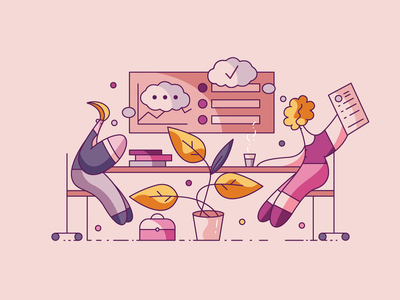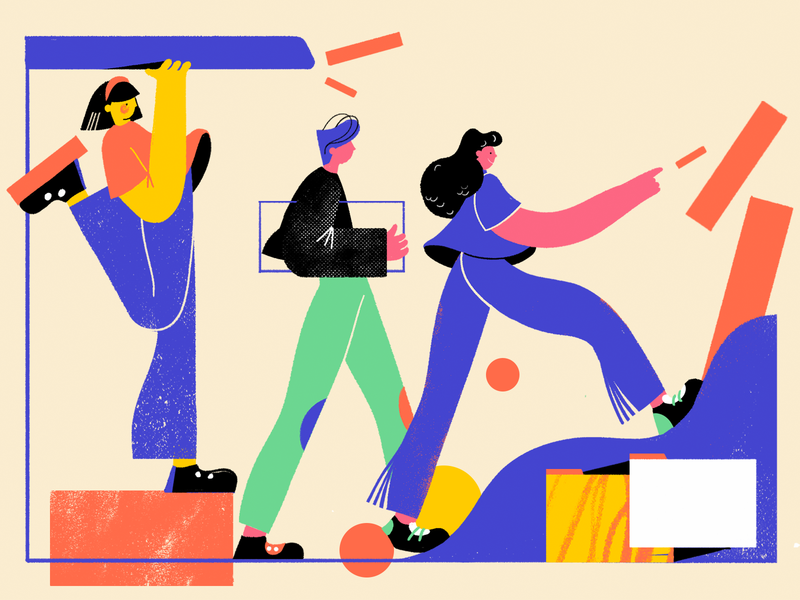You’ve perfected your portfolio, prepared a stand-out resume, and applied to some design jobs you’re really excited about. Now what?
Hopefully, the interview process. Whether it be remote or face-to-face, the interview process and the success criteria you’ll be judged on as a designer will naturally look different than for any other role. It’s important that you understand what’s expected of you so you can come better prepared to nail that conversation.
Just remember—while you might meet all of the requirements or technical skills for a job, you still may not get the offer because of some mistakes that could have easily been avoided in the interview process. In this post, I’ll be covering what these common mistakes are and how you can avoid them to knock your design interview out of the park.
Mistake #1: Not familiarizing yourself with the product
One of the most common UX interview questions that most companies ask is, “Why do you want to work here?” The purpose of this question is to find out how much you know about them and how you can contribute to their growth.
As a designer, it’s crucial that you understand what the company’s product is all about before going into an interview. Do the research beforehand to get a better sense of who the product is for and what problem it’s trying to solve. As you learn more, you’ll be better prepared to confidently communicate how your unique skills and experience align with the company goals and values.
Mistake #2: Lack of curiosity about product & business goals
Hiring managers are looking out for opportunities to identity forward-thinking in designers, and one of the best ways they can do this is by carefully listening to the questions you ask them during an interview session. Don’t make the mistake of coming unprepared.
Now that you’ve done your research about the product, you should hopefully have some questions lined up and ready to ask. A sure-fire way to impress hiring managers is by asking thoughtful questions about product design at the company and how it lends to their overarching business goals. A good place to start is to inquire about common user pain points with the product. Other great questions include:
- How does product design contribute to the success of this company?
- What are the current strengths and weaknesses of your design team?
- What metrics would you use to measure success in this role?
- What part of the design process does the team spend the most time on?
For more ideas, check out my article on the top 10 questions designers should ask in an interview.
Mistake #3: Poor communication
If there’s one thing design managers are looking for in potential candidates it’s excellent communication skills. I can not stress this enough. The interview session is your opportunity to demonstrate the soft skills that your portfolio isn’t able to showcase.
“You can have a great portfolio, but more than anything, your communication skills will make you stand out from the crowd. When things get tough at work, the last thing you need is someone who can’t communicate clearly with others and get aligned on goals.” — Eugen Eşanu
Remember, an interview is meant to be a discussion session and not a one-way question and answer process. This is where having your list of questions and genuine curiosity about the product come into play in engaging in a productive conversation.
On the other hand, when it comes to answering questions, don’t be tempted to say everything you know. Ask yourself if what you are about to say is relevant to the question. Don’t worry too much about whether your answer is too short, so long as it answers the question at hand. Sometimes the shorter answers are better as they are concise and straight to the point.
Mistake #4: Listing out the facts vs. telling the story
When it comes time to talk about your past work, don’t just list out the actions taken in your design process. Aim to tell a compelling story that focuses on the results of the project and how you got there. Remember, it’s often not enough to talk about what you did, but explain how you helped your team and solved a problem for the company and your users.
What were your findings? How were you able to help your team members participate fully in the project? What were some critical design or usability issues you uncovered during the project that were unknown to your team beforehand? How were you able to handle five design projects or moderate five usability tests a day to meet a tight schedule?
Show your value and don’t underestimate the power of compelling storytelling in an interview.
Mistake #5: Rushing into solving the design problem
During a design interview, you are likely going to be given a design task to solve. Make sure you pay close attention to details and take your time to understand the assignment. Don’t make the mistake of rushing into finding the solution.
When it comes to design exercises, design managers are more interested in seeing your thought process than the end-result. They want to see how you approach creative problem-solving and what parts of the design process you’re most curious about. Be authentic and transparent in showing your process rather than focusing on finding the “right” solution. This will go far in demonstrating the full spectrum of your skills.
Takeaways:
Now that you’re equipped with the tips to nail your next design interview, let’s go over the main takeaways to remember:
- Always do your research beforehand: Come prepared with a good understanding of how the product works and how your unique skills and experience can help propel it forward.
- Show interest in the product and overall business goals: Ask questions about product strengths and weaknesses and how design contributes to overarching business goals.
- Engage in a conversation: This is not a one-way discussion. Managers are also evaluating your soft skills as a designer, not just your technical chops.
- Show, don’t tell: Aim to tell a story about your work instead of simply listing off the actions taken.
- Communicate your thought process: When it comes to the design exercise, remember it’s not about the final solution, but how you got there. Don’t rush into solving the problem!
![]() About the author: Before recruiting at Faceobok, Carl was a UI/UX designer working with many tech startups to design mobile apps. Carl is also the co-founder of a Meetup called Global UXD
where he helps connect designers with eachother and create new opportunities. Having completed Bloc and Designlab bootcamps before becoming a recruiter, he’s an expert at helping designers land their first design roles. Find Carl on carlwheatley.com and LinkedIn.
About the author: Before recruiting at Faceobok, Carl was a UI/UX designer working with many tech startups to design mobile apps. Carl is also the co-founder of a Meetup called Global UXD
where he helps connect designers with eachother and create new opportunities. Having completed Bloc and Designlab bootcamps before becoming a recruiter, he’s an expert at helping designers land their first design roles. Find Carl on carlwheatley.com and LinkedIn.
MORE DESIGN HIRING RESOURCES:
- 9 tips for landing a job after design school or bootcamp
- How to build a product design portfolio that will get you hired
- 5 examples of unethical design interviews & how to navigate them
- 21 essential UX design interview questions & how to answer them
Find more Community stories on our blog Courtside. Have a suggestion? Contact stories@dribbble.com.










